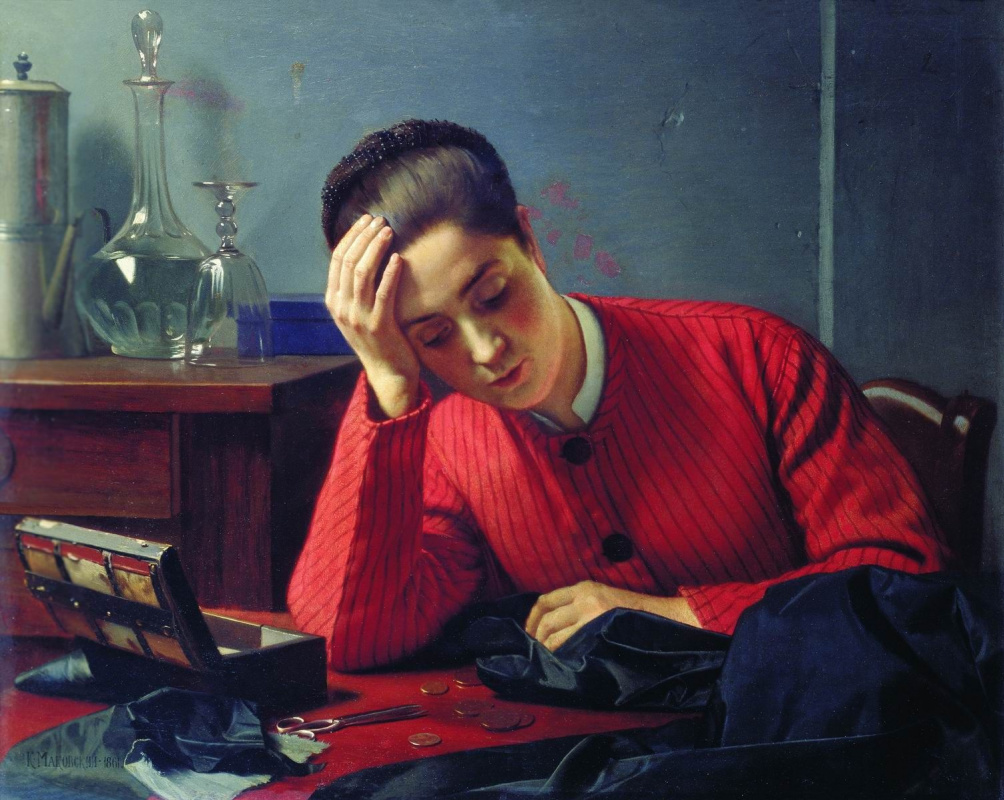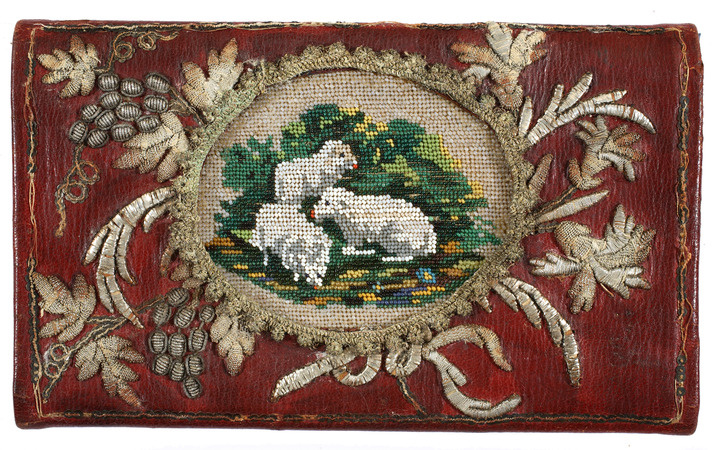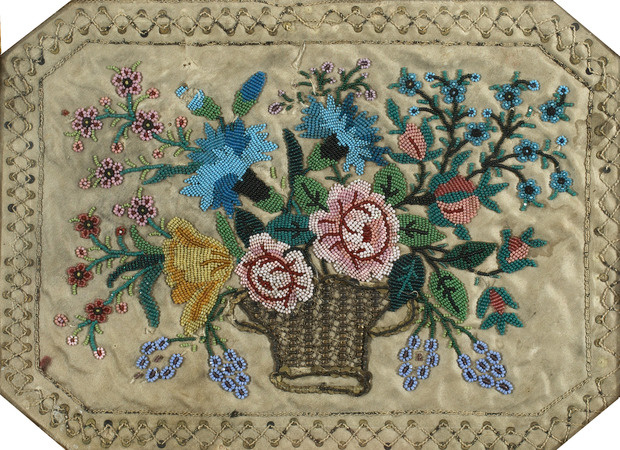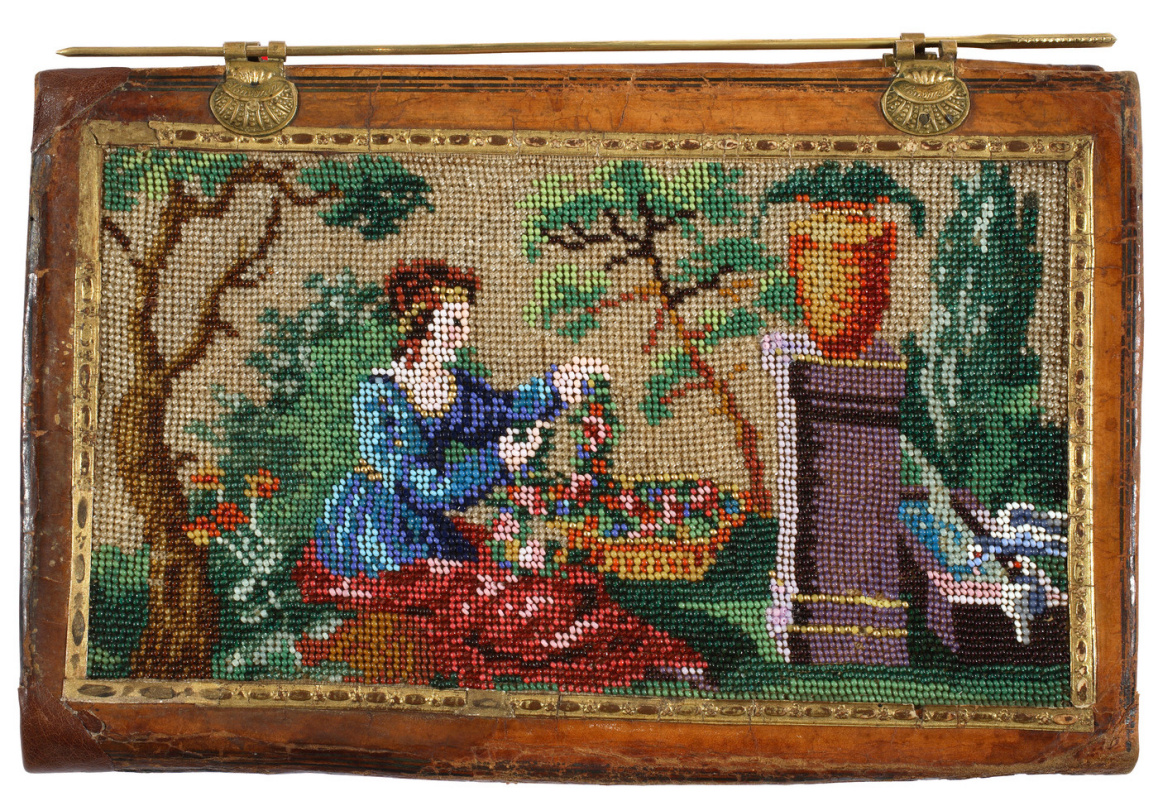Beads are one of the oldest inventions of mankind. Scientists cannot say which appeared earlier, stone beads or glass beads. But both varieties have a very ancient history. The wide breastplate necklaces worn by the Egyptian pharaohs consisted of stone and glass beads. These beads have always been used to create jewellery and garments. But in the 17th century, another trend appeared, pictures beading. Craftswomen created large canvases — landscapes, icons, etc. This trend is popular even today, you can buy a beadwork on any topic. It can even be reproductions of paintings by famous artists.
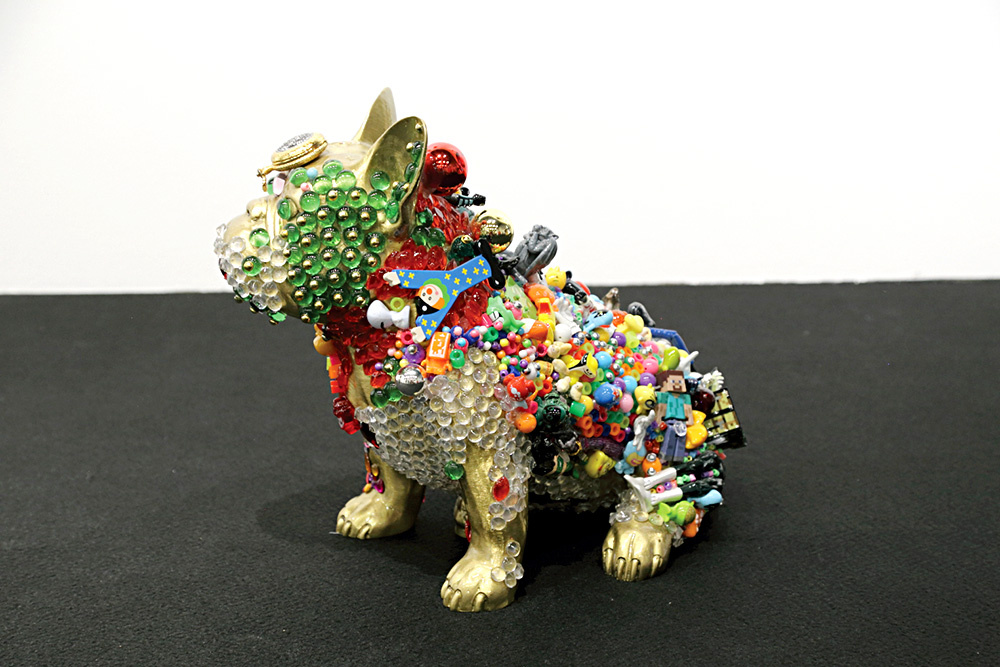
Glass beads: a little history
Glass beads are one of the most ancient inventions. It is believed that this technology is at least 6 thousand years old. In old days, glass was literally "boiled" on fires by placing the mass in pots of refractory clay. The base of the substance was a mixture of quartz sand, lime, soda and chalk. When heated, it turned into a thick viscous mass, from which thin threads were pulled out before wound onto an even thinner copper rod. Its thickness corresponded to the diameter of the future hole. Then the rod was taken out, and the beads were hand-processed.
Necklace. Ancient Egypt. Photo Source
There was another method for beads production: a stretched thread was flattened into a flat strip to wrap around a copper wire. Then the resulting tube was cut into small pieces. Each bead was processed individually, just imagine the amount of work!
To obtain silvery beads, they used molten tin or amalgam, and golden beads were made with a low concentration solution of ferrous sulphate. More expensive beads were made of a solution of gold chloride, but there were also beads cast of pure precious metal, decorated with enamel and small stones.
For many years, Venice remained the centre of bead production. The secrets of the Venetian glass-blowers were strictly guarded. But in the 18th century, beads were also made in Bohemia. Venetian artisans used soda to manufacture glass, whereas in Bohemiam they used potash. Beads were cold processed, this is when they began to apply edges to the Bohemian beads. Mikhail Lomonosov tried to organize beads production in Russia. But the empire produced mainly "old ladies' beads" — rather large beads used to embroider peasant costumes. Aristocrats bought small beads, which they imported especially much after 1812.
At that time, it was impossible to buy a ready-made beadwork, each needlewoman embroidered it herself. One job required 20−30 varieties of beads of different colours, and sometimes even sizes and types (for example, transparent and opaque). Today we often cannot imagine what the finished works were like. Although glass has a better shelf life than wool and silk, it also degrades over time. Black and yellow beads are best preserved in the beadwork of that era. However the manufacturers offered a wide range, close to the artist’s colour pallette, but not all beads have survived to our time. For example, blue ones got destroyed faster due to the peculiarities of the technology (they were made of low-melting glass).
To obtain silvery beads, they used molten tin or amalgam, and golden beads were made with a low concentration solution of ferrous sulphate. More expensive beads were made of a solution of gold chloride, but there were also beads cast of pure precious metal, decorated with enamel and small stones.
For many years, Venice remained the centre of bead production. The secrets of the Venetian glass-blowers were strictly guarded. But in the 18th century, beads were also made in Bohemia. Venetian artisans used soda to manufacture glass, whereas in Bohemiam they used potash. Beads were cold processed, this is when they began to apply edges to the Bohemian beads. Mikhail Lomonosov tried to organize beads production in Russia. But the empire produced mainly "old ladies' beads" — rather large beads used to embroider peasant costumes. Aristocrats bought small beads, which they imported especially much after 1812.
At that time, it was impossible to buy a ready-made beadwork, each needlewoman embroidered it herself. One job required 20−30 varieties of beads of different colours, and sometimes even sizes and types (for example, transparent and opaque). Today we often cannot imagine what the finished works were like. Although glass has a better shelf life than wool and silk, it also degrades over time. Black and yellow beads are best preserved in the beadwork of that era. However the manufacturers offered a wide range, close to the artist’s colour pallette, but not all beads have survived to our time. For example, blue ones got destroyed faster due to the peculiarities of the technology (they were made of low-melting glass).

Showpiece of the Crafts as Art. Beads exhibition (collection of beadworks of the Sergiev Posad Museum Reserve)
Cloisonné and nazar beads
If you want to buy a picture made of beads, then you most likely are looking for a canvas embroidered with glass beads. But for jewellery, more interesting types of beads are also used, for example, cloisonné. These are beads made using the technique of the same name, which assumes wire sectors to be originally made in the beads, which are then poured with hot enamel. It hardens to obtain a glassy coating.It is interesting that the cloisonné is a very ancient technique, it was used in China and Byzantium, and became widespread in Europe. In the old days, such beads were used to decorate clothes, and the technique itself was also used to decorate weapons. Later, it acquired a more utilitarian character — e.g., they were used to make GTO badges in the Soviet Union.
Another interesting technique is used in Turkey. Many have seen tricolour beads with an "eye", they call them nazar. Such beads were sewn on clothes in the pre-Islamic period. They are still made by hand of glass of three shades.

Beaded pictures: the fruits of leisure or “bourgeois” art
Beadworks became popular in pre-revolutionary Russia at the end of the 18th century. All surviving works of that time are made of Venetian or Bohemian beads. The former was smooth and round, the latter was faceted. In the first half of the 19th century, the Biedermeier style, the "bourgeois" style, came into vogue, and the popularity of beadwork grew.By that time, technologies already allowed the production of canvas and paper patterns that facilitated the beading process. But it still remained a laborious task. One small picture took up to 15,000 beads, and in those days the needles were quite thick, they could not pass into small beads. First it was necessary to pull a thread into the bead hole, then pull it through the needle eye and sew on the bead, and then repeat the whole operation with the next one.
It was certainly a time-consuming hobby. Beading was mostly an aristoratic fad. It is also almost impossible to buy a beadwork of the 19th century, because most often these were not large canvases, but miniatures: graceful inserts, private gifts. Sometimes they even exchanged them in correspondence.
The wives of the Decembrists, who followed their spouses to Siberia, preserved their love for fashionable handicrafts in exile. For example, Princess Maria Volkonskaya mostly embroidered sachets and handbags, but sometimes she took on larger work. According to contemporaries, in the village where her father, General Nikolai Raevsky, was buried, she sent to the temple an image of the Raphael’s Sistine Madonna she beaded herself in Chita.
In memory of her father, the daughter of Ivan Nikitich Skobelev embroidered a picture with beads, wool and thread depicting a battle scene (188×108 cm). Along the bottom, on a black wide border, there is an inscription: "To defeat the enemies of my dear fatherland, three fingers left for me by the grace of God are more than enough". Indeed, the episode depicted in the picture took place, Ivan Skobelev lost his left hand in the battle, and only three fingers remained on his right hand.
It was certainly a time-consuming hobby. Beading was mostly an aristoratic fad. It is also almost impossible to buy a beadwork of the 19th century, because most often these were not large canvases, but miniatures: graceful inserts, private gifts. Sometimes they even exchanged them in correspondence.
The wives of the Decembrists, who followed their spouses to Siberia, preserved their love for fashionable handicrafts in exile. For example, Princess Maria Volkonskaya mostly embroidered sachets and handbags, but sometimes she took on larger work. According to contemporaries, in the village where her father, General Nikolai Raevsky, was buried, she sent to the temple an image of the Raphael’s Sistine Madonna she beaded herself in Chita.
In memory of her father, the daughter of Ivan Nikitich Skobelev embroidered a picture with beads, wool and thread depicting a battle scene (188×108 cm). Along the bottom, on a black wide border, there is an inscription: "To defeat the enemies of my dear fatherland, three fingers left for me by the grace of God are more than enough". Indeed, the episode depicted in the picture took place, Ivan Skobelev lost his left hand in the battle, and only three fingers remained on his right hand.
Seamstress
1861, 59×72 cm
Today it is difficult even to buy a beadwork of a later era. Many of them were bought by foreign collectors at the beginning of the 20th century. Moreover, they were often not appreciated by their descendants. In the 1850s, beading became a more accessible art. Beads became widespread among the bourgeoisie. Berlin wool came into vogue, and beads denoted glare or created the volume effect. They stopped embroidering complex pictures, instead, simple patterns — roses, forget-me-nots, birds, traditional symbols (heart, cross, anchor) — came into fashion.
What are modern pictures made of beads like
Beads were traditionally used for mosaics, as well as for the decoration of volumetric items.
Today, it is mainly used for making jewellery or embroidering pictures. Such canvases can be divided into two types. You can buy a picture where only individual details are beaded. Or you can buy a canvas completely embroidered with beads. The latter look more spectacular, since the glass shines beautifully, creating a play of light and shadow. You can purchase a set (pattern, canvas and beads of the desired shades) and embroider the canvas yourself. But this task is a challenge even for an experienced needlewoman.
Before buying a beadwork, you need to find a place for it so that the beads can "open up", to give the radiance they are appreciated for. The colour scheme and motive of the picture are selected so that it matches the interior design concept. Abstract motives will look good in modern spaces (except for hi-tech), whereas floral patterns and copies of famous paintings fit better with the historical interior styles.
Before buying a beadwork, you need to find a place for it so that the beads can "open up", to give the radiance they are appreciated for. The colour scheme and motive of the picture are selected so that it matches the interior design concept. Abstract motives will look good in modern spaces (except for hi-tech), whereas floral patterns and copies of famous paintings fit better with the historical interior styles.











